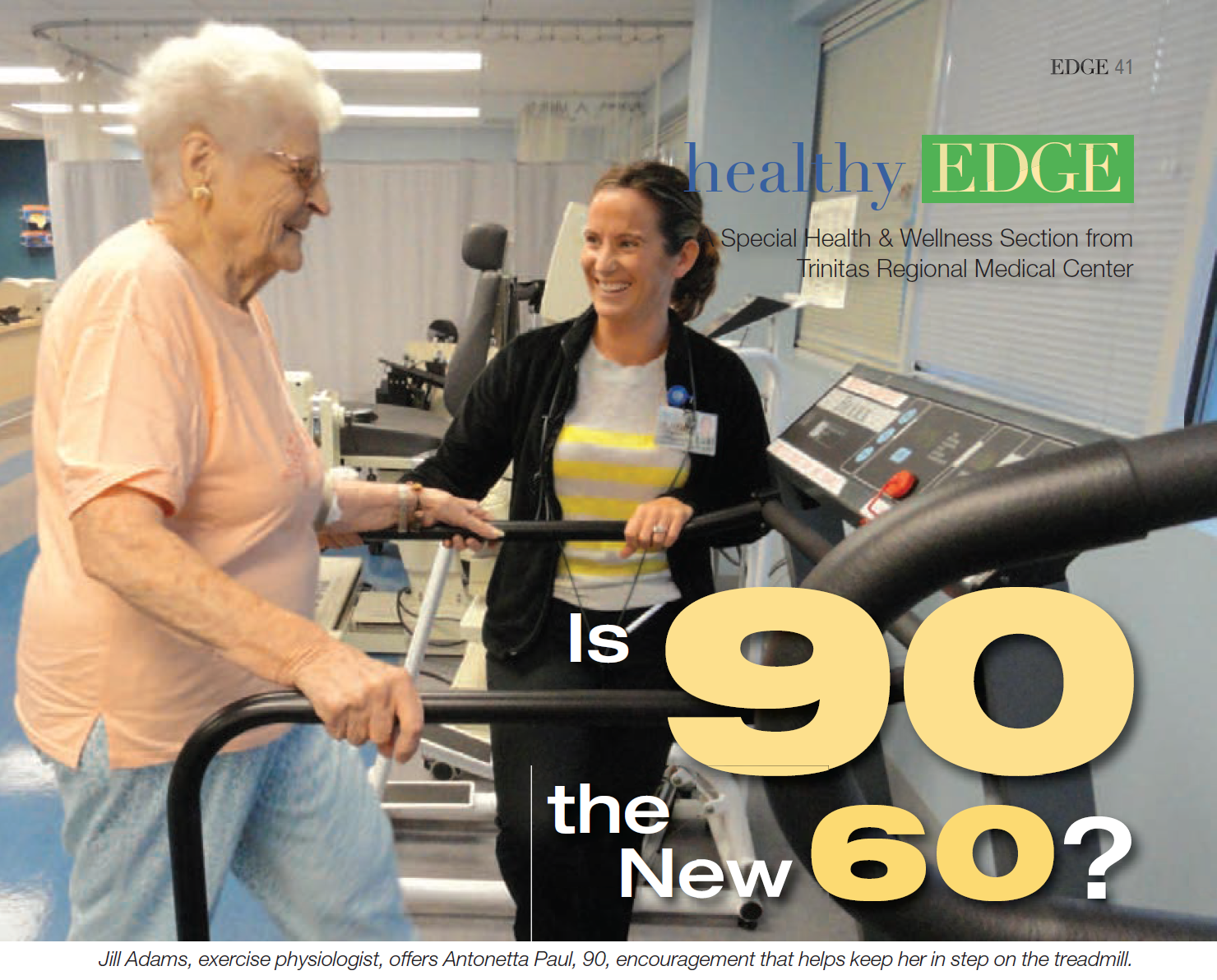When Hollywood needs a go-to country, it goes to Morocco
 Here come the choppers. Swirling into Mogadishu. Smoke, dust and sand fill the screen. Swarms of half-naked kids race past adobe buildings that explode into flames and deadly debris. Somalia never looked more hellish. The American Rangers never looked more battle-ready. It’s Blackhawk Down—based, of course, on actual events and directed by Ridley Scott, who is mighty pleased with his blockbuster film. Dramatically a winner, financially a dreamboat that, reportedly, earned its investors “ten bucks on the dime.” And filmed On Location. Switch to Lebanon’s land-mined desert. Leonardo DiCaprio, hands aloft in surrender, must outfox both the ill-advised CIA as well as the local terrorists.
Here come the choppers. Swirling into Mogadishu. Smoke, dust and sand fill the screen. Swarms of half-naked kids race past adobe buildings that explode into flames and deadly debris. Somalia never looked more hellish. The American Rangers never looked more battle-ready. It’s Blackhawk Down—based, of course, on actual events and directed by Ridley Scott, who is mighty pleased with his blockbuster film. Dramatically a winner, financially a dreamboat that, reportedly, earned its investors “ten bucks on the dime.” And filmed On Location. Switch to Lebanon’s land-mined desert. Leonardo DiCaprio, hands aloft in surrender, must outfox both the ill-advised CIA as well as the local terrorists.
It’s Body of Lies and we don’t have to worry about Leo’s ultimate success. It’s never in doubt. Also filmed On Location. On a less hair-raising note, let’s zoom in on Sarah Jessica Parker who, as Carrie Bradshaw, sits quaffing champagne, flanked by her faithful trio of gal-pals. She’s draped in radiant silks, legs akimbo, on a priceless oriental rug in the deepest recesses of the Shah’s palace in Saudi Arabia. Precise location? Undisclosed for security concerns. Again, filmed On Location. And let’s not overlook those intrepid swashbucklers: Sean Connery, Christopher Plummer and Michael Caine. Resplendent in Her Majesty’s gold braided, brassbuttoned Imperial uniforms, braving the blizzards of India’s Himalayan heights. It’s India-profound.
The British Empire is in full flower. The Man Who Would Be King, first conceived by that old imperialist himself, Rudyard Kipling, whose saber-rattling novel was lovingly transposed into film by John Huston. And, yes, filmed On Location. On Location. Magic words. They convey authenticity and sky-high budgets. They conjure up drama, adventure, exotica and romance with a capital R. Somalia, Lebanon, Saudi Arabia, India. No expense spared. And who stops to ask, “Yes, but what location?” The answer lurks in the rapidly rolling credits, just before the screen goes blank. Just before the lights come up and you’re reaching for your hat, the car keys and those missed messages on your cell phone. Or pushing the little square button on the remote. So no wonder you missed that split-second phrase that so graciously thanks King Hassan II or, more recently, King Mohammed VI and the People of Morocco. This is one of the film industry’s best-kept secrets, a secret that delights directors and accountants and—Surprise! Surprise!—delights even the pampered stars of stage and screen, who do not take kindly to life in the rough. Everyone who is anyone in the film industry, it seems, knows full well the advantages of shooting a film in Morocco.
Fooling the Camera For starters, there’s the easy accessibility to every kind of scenery. Snow-crested mountain peaks in the Atlas Mountains. Endless vistas of sandy shorelines, both Atlantic and Mediterranean. Boulder-studded canyons like Glaoui Kasbah, Ait Benhaddou Kasbah, and Valley of the Nomads. Cascading waterfalls, rushing rivers, tranquil lakes and infinities of golden Saharan sands. Remember that scene in The English Patient? There is Ralph Fiennes, the love-stricken English-speaking Hungarian spy. He has settled his wounded amour, Kristin Scott Thomas, the seductive Katharine, in the depths of an Egyptian cave far out in the Sahara. She’s gravely wounded. One last, long embrace. As defense against the inevitable dark, she has only a faltering flashlight and a tattered copy of Herodotus.
Off he sets across the endless desert sands seeking help. We see him silhouetted on the far horizon, staggering, parched, heat stricken, doomed. All around the desert folds and unfolds into time without end. A nine-Oscar triumph! But forget all that about Egypt. From start to finish it was made not in Egypt, but a thousand miles to the west, in Morocco. Another smash hit filmed On Location It’s not just that Morocco can provide lookalike landscapes that easily pass for the Australian outback, a Hopi reservation, the jungles of the Amazon or the icy passes of the winter-bound Ural Mountains. Have you even an inkling how many scores of films are made every year based on the Bible, the Torah or the Quran? Morocco has every holy answer from the Temple of the Pharisees to the stable of the nativity. And if you’re a filmmaker with a tight shooting schedule and a dicey budget, it does not hurt one whit that Morocco can truthfully claim 360 days a year of unpolluted sunshine.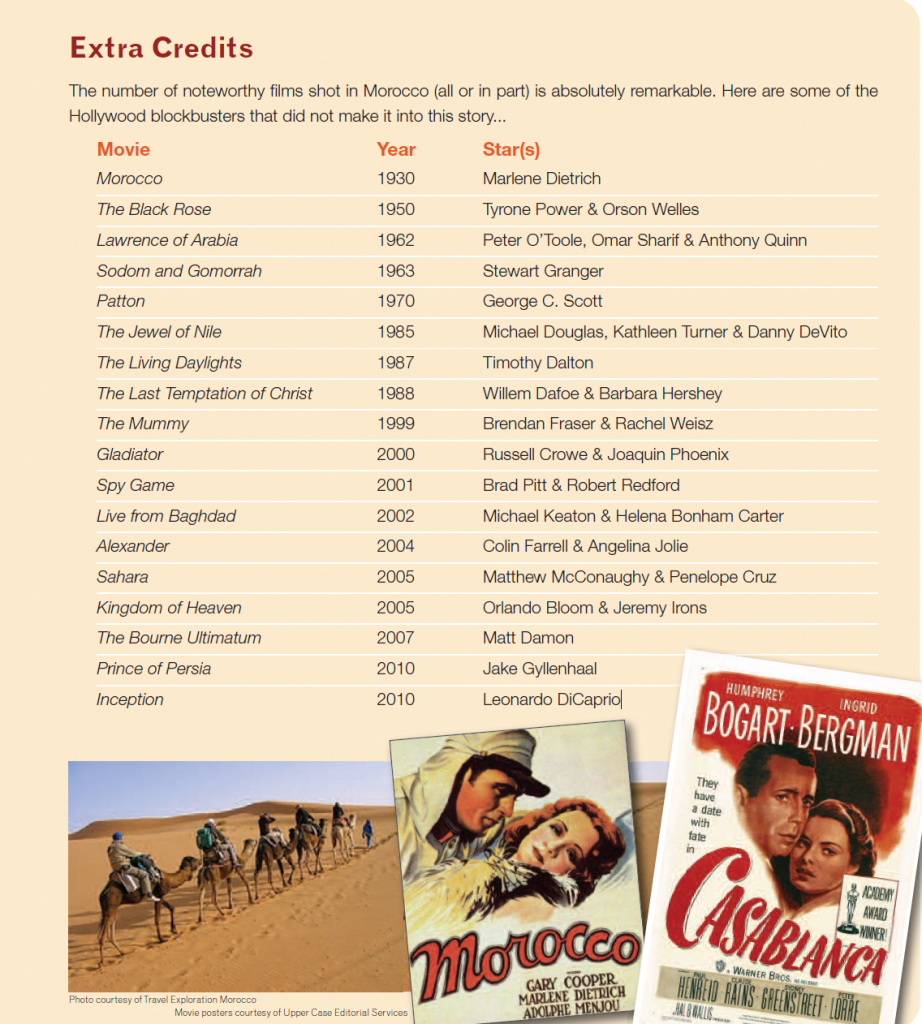
A Nation of Extras The silver screen’s love affair with the country dates back to 1897, when that French film pioneer, Louis Lumière took his camera crew there to film Le Chevalier Marocain (The Moroccan Knight). Orson Welles chose Morocco as the setting for his filmed version of Shakespeare’s Othello. Alfred Hitchcock made The Man Who Knew Too Much in the lush city of Marrakech, Morocco’s mecca for luxury lovers, be they movie moguls or run-of-the-mill zillionaires. Not surprisingly, so many decades of movie making has worked a kind of mutation on the DNA of the people of Morocco. It seems as if every man, woman and child has worked as an extra (a delightful gimmick for supplementing a daily wage). When Martin Scorsese on a morning needed a huge crowd of palm-waving devotees to welcome the Saviour into Jerusalem in The Last Temptation of Christ, the crowd was easily whistled up on minimum notice.
He could have had his crowd barefoot or sandal-clad. Or a bit of both. Everyone arrived authentically garbed in robes lifted right out of the Gospels. When, that very afternoon, the schedule called for a mob of enraged citizenry shrieking for a crucifixion, the morning crowd had no trouble “switching allegiance.” Strikingly handsome Tahar Najoui, 40-ish, who works for Travel Exploration Morocco as an expert van driver, delights in transporting tourists, film crews and movie stars to every corner of his native land. He modestly admits to acting as an extra in “more films than I can count.” The maid who tidies your room in the Berber Palace Hotel has probably played in half a dozen filmed street scenes. Her kids have happily passed for street urchins in ancient Rome or child soldiers in some Central African civil war. Your bus driver probably marched with Alexander the Great or stormed the ramparts of a 12th century fortress. Casting epic films on location in Morocco is the least of a director’s worries.
French Connection The French, who for many years affectionately called Morocco their Protectorate, have long since pulled up colonial stakes and retreated back to chez-eux. But as is so often the case, their legacy is very much in evidence. The engineering marvel of incredible road networks that join sea to mountain to desert was actually built by the French Foreign Legion—once everywhere in evidence, but today a discreetly diminished presence. Arabic and Berber are Morocco’s first languages, but French is widely spoken; English, in no small measure thanks to the film industry, is coming on with lightning speed. The legacy of the French is seen in other subtle ways: The windows of the pastry shops in Fez, Rabat or Casablanca could pass for patisseries in the Rue de Rivolli or the Plâce Vendôme.
The women of Morocco, bareheaded or partially veiled, move with a feather-footed grace that typifies the Paris pedestrians. Where else in North Africa can one walk the streets unhassled, confident that the crowd in the bazaar or the souk will not suddenly turn into a mob of hostage-takers intent on flag-burning or a game of effigy hangman? In addition to great roads and a predisposition for street chic, the French also left their Catholicism, which mixes painlessly with Islam and Judaism. It’s an easy blending that conveys a very European feel to the whole country. Morocco manages to balance delicately as part-Islamic, part-Christian, part-Catholic, part-Protestant. Many (but not all) women wear head scarves but the top-to-toe burqa is an oddity. Women are welcome to drive cars, attend university and marry as they please. Secularity has the upper hand in Morocco which, alone among North African nations, is quietly funding a well-organized push to join the European Union.
Government Blessings Sunshine and incredible scenery are only part of the answer as to why movies and Morocco are such a good fit. Take a look at the coastline of North Africa. Traveling east to west, from Egypt to Libya to Tunisia, Algeria and finally Morocco. In every country political unrest, riots, arson, roadblocks and civil upheavals are daily fare. Morocco alone remains serene. By the same token, why subject Emily Blunt and Ewan McGregor to the indignities of the streets of Yemen when Morocco affords Yeman-y landscapes as good as (or even better than) the real thing? If you caught Salmon Fishing in the Yemen when it hit theaters, once again, you were on location in Morocco. “We are,” as a well-known guide pridefully told a bus full of Japanese tourists, “the Safest Door to the Desert.” With a keen nose for profit, the Moroccan government has gone overboard to eliminate red tape for movie-makers. No nasty tie-ups there about film permits. Applications are approved within 24 hours at pleasingly competitive prices, especially as compared to Europe or North America.
Furthermore, from the Mediterranean in the north of Morocco to the Sahara in the south, filmmakers can count on ready access to state-of-the-art camera equipment, experienced sound and lighting crews and catering services that will provide soufflé au chocolat, perfectly ripe Camembert or chilled to perfection Moet et Chandon—even in the far reaches of the Moroccan Sahara. No need to transport all that equipment or all those technicians from California. It’s already right there in Morocco, and available at prices that undercut all competitors. Cate Blanchett first visited Morocco when she traveled there to star in Babel. The film was a huge box office success. Whether it was the success of the film or the appeal of the country, who’s to say? But rumor has it that Australian-born Blanchett and her husband, Andrew Upton—who together act as co-directors of the Sydney Theatre Company—are now interested in setting up a similar theatrical company, probably in southern Morocco. True? Absurd? Who’s to say? But certainly for now, it’s safe to say that there will be plenty more films…as distinct from one another as Sex and the City and Saint Joan, lining up to be produced in Morocco…aka “The Other Hollywood” or, as we say in the trade, On Location.
“I am definitely stealing that pancetta vinaigrette for a dozen different dishes I cook at home.”

Ursino’s executive chef, Peter Turso
Back there,” my friend said, pointing to his left as we walked across an expansive parking lot at Kean University to Ursino, a restaurant set in a science building amid classrooms and common spaces. “That’s where the farm is. Four acres. You don’t expect it, but it’s there.” He continued to describe the produce he saw growing during a summertime tour—how the farm was laid out, and the enthusiasm for the percolating crops displayed by Ursino’s executive chef, Peter Turso, and the farmer-in-residence, Henry Dreyer. Four lush, green acres are cloistered in crammed-full Union that are mined to the max by the farm-to-table team of Turso and Dreyer. As he detailed the operation, I envisioned similar campus farms sprouting at any one of New Jersey’s institutions of higher learning. I’m glad for the overview my friend provided because, once inside Ursino’s thoroughly modern, multilevel dining areas, that was the only mention of the mere-yards-away, oncampus farm I heard. Not one member of the service staff took a moment to tell us of the unique relationship between Kean and Ursino, the reasons for its existence and how  Turso’s menu reflects what’s grown by Dreyer and his farm crew. The menu descriptions, while referring to the origins of ingredients such as Barnegat scallops and “local” oysters, all but ignored this extraordinary plus. For instance, Liberty Hall beet salad, with its richly colored baby carrots, nibs of honeyed walnuts and sparks of sharp Valley Shepherd cheese, was a rousing harbinger of autumn on this latesummer night. Yet nowhere is it explained that Liberty Hall is both the name of one of Kean’s campuses and a history museum, originally the elegant home of New Jersey’s first governor. (You’d think an education would be part of the dining package.) We had to ask about almost everything, and waits between questions and answers often were long. On the other hand, Turso’s focused, uncomplicated food doesn’t need a promotional boost. Slice into the smoked swordfish, smartly partnered with shavings of crunchy fennel and perky pea tendrils, and you’ll quickly be distracted from service flaws by flavor rhythms of the rich fish as it intersects with a smack of anise from the fennel and the engaging rawness of the shoots.
Turso’s menu reflects what’s grown by Dreyer and his farm crew. The menu descriptions, while referring to the origins of ingredients such as Barnegat scallops and “local” oysters, all but ignored this extraordinary plus. For instance, Liberty Hall beet salad, with its richly colored baby carrots, nibs of honeyed walnuts and sparks of sharp Valley Shepherd cheese, was a rousing harbinger of autumn on this latesummer night. Yet nowhere is it explained that Liberty Hall is both the name of one of Kean’s campuses and a history museum, originally the elegant home of New Jersey’s first governor. (You’d think an education would be part of the dining package.) We had to ask about almost everything, and waits between questions and answers often were long. On the other hand, Turso’s focused, uncomplicated food doesn’t need a promotional boost. Slice into the smoked swordfish, smartly partnered with shavings of crunchy fennel and perky pea tendrils, and you’ll quickly be distracted from service flaws by flavor rhythms of the rich fish as it intersects with a smack of anise from the fennel and the engaging rawness of the shoots.
With the grilled octopus, also a starter, a taut, charred crust yields to a softer center as harmonious riffs of accents enhance the fundamentally bland but meaty sea creature. There’s the silky puree of Marcona almonds, the sweetness of roasted red peppers and the spirited heat of chimichurri. All prod more from the octopus than typical treatments with lemon and garlic. We asked for spoons to help us get all we could out of the coconut-curry mussel pot. It’s a bountiful cauldron of large mussels in a rousing sauce that resonates with curry’s warming mix of spices tempered by the cooling sweetness of coconut milk. A bonus on the side: crunchy, spunky, slightly salty shrimp toast, the perfect sop-up agent. During the waits for wine and food, my dining companion offered the background the staff didn’t—on Turso (experienced chef, stints at Nicholas in Middletown and David Drake, now shuttered, in Rahway) and Dreyer (veteran farmer, renowned and beloved in the region), and why Kean U. wanted both a farm and an upscale restaurant (farm-to-table is on-trend and attractive to potential students, their parents, alumni and donors). In my mind, I added an introduction to the menu that said, “Your vegetables are grown on this campus. Please take a short walk and visit our farm.”
Those Barnegat scallops do have a ball, tossing tastes back and forth with Dreyer’s roly-poly turnips and bitter, but braised-to-sweet radicchio. As I swiped a scallop speared with a slice of turnip, a leaf of radicchio and a sliver of sweet apple through a wash of citrus-licked butter sauce, I tasted exactly why this farm-to-table thing has taken root: Fresher is better. But I did want to know where the “local pork” and its hen-of-the-woods mushrooms that star in one of Turso’s signature dishes come from. So even if the captains don’t care to connect, a little menu rewriting could serve as a bridge. Ursino’s expertly cooked, top-quality halibut has no problems connecting to an accompanying stew of leeks, red onions, fennel and potatoes. Uniting it all is a vivacious vinaigrette, punctuated by smoky-sweet pancetta that underscore for me why dining out and experiencing strong new voices in food is a joy. I am definitely stealing that pancetta vinaigrette for a dozen different dishes I cook at home. Terrific, and then some. Less than terrific was the cheese plate. I’d asked if any of the cheeses were from the revered Valley Shepherd, of Long Valley, and was told “maybe one,” without specifics, by a plate runner. He returned to say “all the cheeses” were Valley Shepherd’s, though still without much in the way of details. We gambled, and though my favorite nettle-streaked cheese made it to the plate, we were served just six paper-thin, inchlong slivers of cheese that looked lonely and wan on the large plate. And for $15. No price-to-portion quibble with the lemon ricotta ice cream sandwich, with almond sponge cake forming the bookends and raspberry, lavender and teensy sprigs of basil reminding us of that very nearby farm. I wasn’t impressed, though, by the heavy-textured banana bread pudding, laden as it was with too many layers of caramel, chocolate and hazelnut. As we walked out of Ursino and back across the parking lot, my friend says, “Food’s great here, but how would you know there’s a farm behind it? Shouldn’t that be all over the menu and the first thing the servers say?” Yes to both.
Ursino, as envisioned by its chef and its farmer, hits the mark with fresh-faced food that routinely tips its hat to its origins through inherent simplicity. It follows Rule No. 1 in cooking—don’t mess too much with fine ingredients—to the letter. But it’s incongruous, particularly in a university setting, that the educational component of farm-to-table is lacking. But this is an easy fix; basic menu-editing and staff instruction. By the time you read this, the team of chef Peter Turso and farmer Henry Dreyer will almost certainly have aced the test.
Editor’s Note: Andy Clurfeld has been an advocate of “buying local” in the Garden State since the late 1970s, so the burgeoning farm-to-table movement is hardly new to her. She writes the syndicated food-wine pairing column Match Point and has been covering everything New Jersey—from politics to crime to tax issues (and of course food!)—as a newspaper and magazine journalist for more than three decades. She was a Pulitzer Prize finalist in 2010. 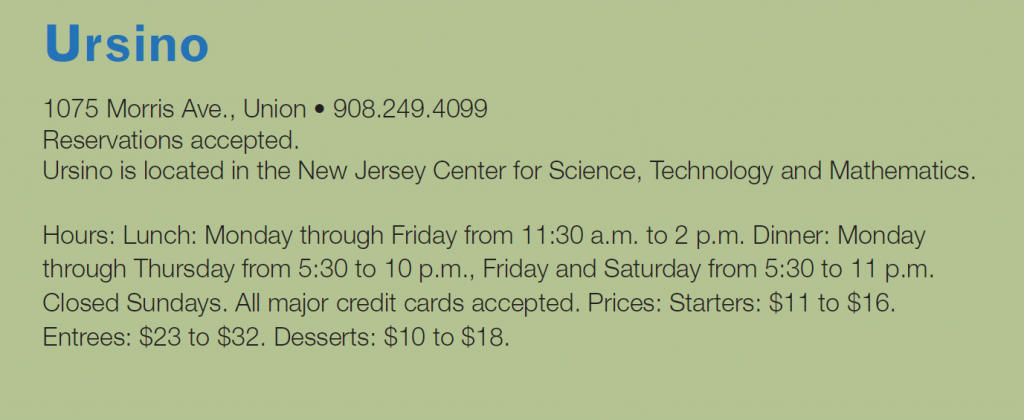
‘Politics as Usual’ is anything but in the Garden State
I’m betting you missed this news item last spring: The Center for Public Integrity issued a report ranking the 50 states in terms of their level of corruption. Not surprisingly, New Jersey ranked #1. But wait. This list went from least-corrupt to most-corrupt. Could it be that the Garden State has suddenly gone from down-and-dirty to squeaky-clean? Well, based on the criteria used by CPI to measure corruption, the answer is Yes. New Jersey earned perfect scores in categories such as Lobbying Disclosure and Internal Auditing. The report did point out that many states that had historically struggled with sleazy politics surged to the top of the list because past problems had led to strict enforcement measures. These measures created better transparency and accountability, and kept politicians on the up-and-up. In just a few years, the state of politics in the Garden State has gone from cesspool status to a point where it now boasts some of the toughest ethics and anti-corruption laws in the nation. How did New Jersey politics get so bad in the first place? You have to go back more than a century to start answering that question. Beginning in the 1890s, New Jersey went what can best described as “borough-crazy.”
The result was a collection of more than 500 municipalities, each of which controlled millions of dollars in contracts. This money was budgeted and spent by people who typically lacked the expertise to do so. In other words, there was a lot of money around and not a lot of sophistication. It didn’t take long for unscrupulous politicians to start manipulating this situation to their benefit. Bid-rigging, nepotism, conflicts of interest, bribery, extortion, out-and-out theft—you name it, some New Jersey politician probably tried it. A few were nabbed, but most were not. And even when they were caught, almost no one beyond a certain geographical radius was likely to hear about it. The major media markets of New York and Philadelphia didn’t have much interest in New Jersey politics. That made for an illinformed voting population and arrogant local politicians who felt as if they were operating in a vacuum. And, for the most part, they were. Some would argue that, in many cases, they still are. Is there an actual culture of political corruption in New Jersey? Although shows like Boardwalk Empire and The Sopranos are constructed on this premise, the honest answer is No. The vast majority of public officials are basically trustworthy, mostly competent and, in a few cases, possibly altruistic.
The problem has always been— and may still be—that New Jersey voters don’t really harbor a sense of outrage when they get swindled. When we see or hear about politicians gone bad, we feel that somehow it’s just politics as usual. We shrug our shoulders and just move on. Shame on us. So how did we get to where we are today? It’s a long story of good, bad and ugly. To appreciate the sweep of history—and to get a feel for the politicians who have made headlines for all the right and wrong reasons—we present a brief Timeline of New Jersey Political History. For an “extended” version, log onto edgemagonline.com.
The EDGE Timeline of New Jersey Political History
1665—The proprietors of the New Jersey Colony introduce the Concession of Agreement. It guarantees freedom of religion.
1674—The colony is divided into West Jersey and East Jersey. Burlington is named the capital of West Jersey and Elizabeth is named the capital of East Jersey. Perth Amboy will replace Elizabeth as the provincial capital of East Jersey in 1686.
1776—Five New Jerseyans affix their signatures to the Declaration of Independence: Abraham Clark, Francis Hopkinson, John Hart, Richard Stockton and John Witherspoon.
 1776—The first state constitution is drafted and passed in a span of one week to prevent the colony from descending into anarchy after George Washington’s army is routed in New York by the British. It gave unmarried women and African-American men the vote, so long as they owned property, and gave all adults “who are worth fifty pounds proclamation money” the right to vote. William Livingston—a vital leader during the American Revolution—is New Jersey’s hastily elected governor.
1776—The first state constitution is drafted and passed in a span of one week to prevent the colony from descending into anarchy after George Washington’s army is routed in New York by the British. It gave unmarried women and African-American men the vote, so long as they owned property, and gave all adults “who are worth fifty pounds proclamation money” the right to vote. William Livingston—a vital leader during the American Revolution—is New Jersey’s hastily elected governor.
1783—Mutinous troops in Philadelphia prevent the Continental Congress from convening, so the nation’s capital is temporarily moved to Trenton. Trenton becomes the state capital six years later.
1789—Congressman Elias Boudinot of Elizabeth delivers a speech suggesting a national Thanksgiving Day.
1838—New Jersey gets its first official black eye for dirty politics, when ballot-tampering helps five Whigs win election to the U.S. House of Representatives. After an investigation, their Democratic opponents are given the seats.
1844—New Jersey adopts a new constitution, this one enabling the people (instead of the legislature) to choose a governor, and separates the branches of power into legislative, executive and judicial. Unfortunately, the new constitution also restricts voting to white males.
1848—New Jersey Congressman (and future Governor) William Newell establishes the U.S. Lifesaving Service.
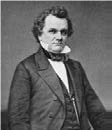 1860—New Jerseyans cast more votes for Stephen Douglas than Abraham Lincoln in the presidential election. Former Governor Rodman Price urges New Jerseyans to join the Confederacy.
1860—New Jerseyans cast more votes for Stephen Douglas than Abraham Lincoln in the presidential election. Former Governor Rodman Price urges New Jerseyans to join the Confederacy.
1864—Lincoln loses New Jersey again, this time to Jersey-born George McClellan. It is the only free state to reject Lincoln twice.
1870—African-American men are allowed to vote again, thanks to the 15th Amendment. Thomas Peterson of Perth Amboy is the first to cast a ballot, voting in a local election. Townspeople award him with a gold medal to commemorate the occasion.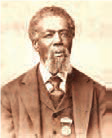
1875—The state constitution is amended so that New Jersey can provide a free public school system.
1881—President James Garfield convenes his cabinet and runs the government by telegraph from Elberon while his wife recovers from malaria. He returns to Elberon in September to recover from an assassin’s bullet. Garfield passes away on September 19th.
1893—In a ceremony at the Navesink Light Station in Highlands, the Pledge of Allegiance is given as the official national oath of loyalty for the first time.
1899—U.S. Vice-President Garret Hobart, a New Jersey native, dies in office of heart disease. President William McKinley replaces Hobart with Spanish-American War hero Theodore Roosevelt.
1905—McClure’s magazine publishes a two-part story by muckraker Lincoln Steffens on corruption entitled New Jersey: The Traitor State.
1910—Aiming to curb the influence of Hudson County machine boss Little Bob Davis, Woodrow Wilson leaves his job as president of Princeton University, runs for governor and wins election. During Wilson’s term, the state is introduced to worker’s compensation and primary elections.
1911—After being charged extra to attend a motion picture in Paterson, Minerva Miller, an African-American woman, sues the theater and challenges the state to uphold an 1884 law that promises all persons full and equal enjoyment of public places, including theaters. The law is upheld and the theater is fined $500.
1916—Walter Evans Edge tabs Atlantic City political boss Enoch “Nucky” Johnson to run his campaign for governor. With help from rising Jersey City power broker Frank Hague, Edge wins election in 1917. As a thank you, he immediately initiates plans to connect Jersey City to Manhattan (Holland Tunnel) and Atlantic City to Philadelphia (Ben Franklin Bridge).
1919—New Jersey is the first state to ratify Prohibition.
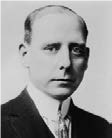 1920—Frank Hague, now Jersey City mayor, passes an ordinance that requires anyone making a public speech in his town to first get clearance from the Police Department, which he controls. Without public opposition, Hague serves as mayor for 30 years (1917– 1947).
1920—Frank Hague, now Jersey City mayor, passes an ordinance that requires anyone making a public speech in his town to first get clearance from the Police Department, which he controls. Without public opposition, Hague serves as mayor for 30 years (1917– 1947).
1937—Jersey City reports it has 160,050 registered voters for that year’s election. The actual number of residents of voting age in Jersey City is just 147,000.
1947—A new state constitution is adopted. It spells out new rules and procedures in virtually every part of state law aimed at plugging old loopholes and cleaning up past abuses. The effort is spearheaded by Governor Alfred Driscoll, and is aimed squarely at Frank Hague, who quickly resigns from office.
1953—With the creation of the Waterfront Commission, Governor Driscoll predicts that it would “drive the gangsters and the hoodlums off the waterfront.”
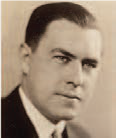 1954—Former governor Harold Hoffman admits in a letter opened after his death that he had embezzled more than $250,000 and was also being blackmailed for $150,000.
1954—Former governor Harold Hoffman admits in a letter opened after his death that he had embezzled more than $250,000 and was also being blackmailed for $150,000.
1960—After vast support for Dwight Eisenhower in 1952 and 1956, New Jersey voters give a slight edge to John Kennedy in the presidential election, helping him defeat sitting Vice- President Richard Nixon.
1962—Hugh Addonizio is elected mayor of Newark. Following his eight years in charge, a federal judge characterized his administration as “literally delivering the city into the hands of organized crime.”
1964—The Democratic National Convention is held in Atlantic City. Robert Kennedy receives a 12-minute standing ovation before urging the party to fulfill his brother’s vision. Nominee Lyndon Johnson goes on to win the election, and pushes through the landmark Civil Rights Act of 1964.
1970—Kenneth Gibson becomes the first African American to be elected mayor of a major northeastern city. He serves four terms.
1971—A group of 28 Catholic anti-war activists are arrested after breaking into a Camden draft board. More than half are acquitted despite admitting their crime in what came to be viewed as a turning point in the anti- Vietnam War movement.
1974—New Jersey Congressman Peter Rodino chairs the Watergate hearings as head of the House Judiciary Subcommittee.
1976—The State Supreme Court shuts down public schools for eight days until the legislature passes a tax bill to support school systems in impoverished areas. It is New Jersey’s first state income tax.
1977—Governor Brendan Byrne signs a bill legalizing casinos in Atlantic City. “I’ve said it before, and I will repeat it to organized crime,” he says. “Keep your filthy hands off Atlantic City. Keep the hell out of our state.”
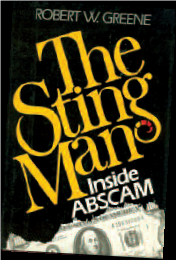 1982—The Senate Committee on Ethics recommends that Senator Harrison Williams be expelled because of his “ethically repugnant” conduct in the ABSCAM sting—an FBI operation aimed at ferreting out corruption in congress. He later becomes the first Senator in 80 years to go to jail.
1982—The Senate Committee on Ethics recommends that Senator Harrison Williams be expelled because of his “ethically repugnant” conduct in the ABSCAM sting—an FBI operation aimed at ferreting out corruption in congress. He later becomes the first Senator in 80 years to go to jail.
1985—After a narrow victory over Jim Florio four years earlier, Thomas Kean is re-elected, winning by the widest margin in New Jersey history.
1993—Christine Todd Whitman ekes out a one-point win over Jim Florio to become the state’s first female governor. She is also the first Republican woman to unseat a sitting governor in a general election.
2002—Former Governor Thomas Kean is picked to chair the 9/11 Commission.
2007—Governor Jon Corzine is critically injured when his vehicle crashes at over 90 mph on the Garden State Parkway. Corzine, who is not wearing a seatbelt, breaks more than 15 bones.
2008—Five-term Newark Mayor Sharpe James is sentenced to 27 months in federal prison after being found guilty on five counts of fraud.
2012—Babs Siperstein (formerly Barry) of Edison becomes the first elected transgender member of the Democratic National Committee.
Historical images courtesy of Upper Case Editorial Services
Editor’s Note: Mark Stewart has written six books about the history and culture of the Garden State. He has a degree in History from Duke University, but mostly learned about New Jersey politics during his 14 years as a Hudson County resident.
Fate is a cruel mistress, especially in the entertainment industry. Reaching the top, even for a moment, is a longshot at best. Staying on top is a near impossibility. In the world of rap music, this is especially true. Which is what makes Curtis Jackson, better known as 50 Cent, someone worth talking to. He has used his top-selling albums as a springboard to do well in a number of other businesses—consumer electronics, energy drinks, boxing promotion and movie-making, to name four—and more importantly, to do a lot of good. EDGE’s Tetiana Anderson connected with 50 Cent at a technology trade show in Berlin, where he was promoting SMS Audio’s newest headphones. In a wide-ranging Q&A, she discovered a three-dimensional thinker with the drive and vision to redefine what a celebrity can (and should) be.
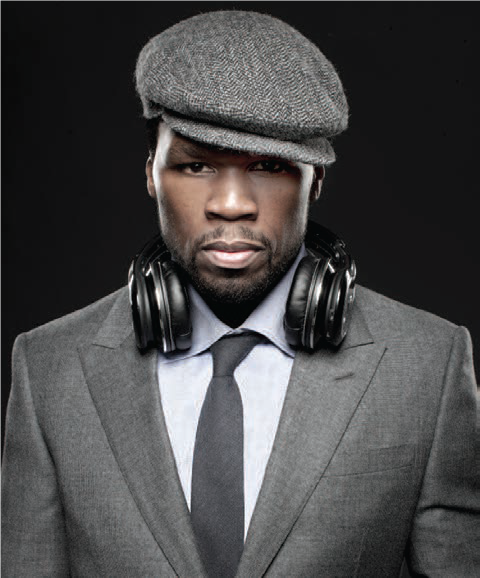 EDGE: Why is diversifying into multiple forms of entertainment so important for you?
EDGE: Why is diversifying into multiple forms of entertainment so important for you?
50 CENT: The artist community can create a negative energy for you. My first record, Get Rich or Die Tryin’ was the largest debuting hip-hop album. I went on to sell 13 million records. Later in my career, people compared me to that first impression I made, and you don’t get a second chance at a first impression. In order to allow me to explore my passion for music, I moved away from it, gave myself other projects to be involved in. This is why there is such diversification of the portfolio of the things that generate an income. It secures the freedom to do things creatively as I please.
EDGE: You had two movies out in 2012—Freelancers and All Things Fall Apart. In All Things Fall Apart you dropped 60 pounds to play a college football star dying of cancer. How did you prepare for such a huge personal commitment?
50 CENT: I had all the emotions necessary for it ’cause I lost my best friend growing up under those circumstances. That was why I committed to a project that would take so much physical discipline. The scene where I’m on the bed with Lynn Whitefield and I actually start crying, my friend said the same words to me. He said, “Why is this happening to me? I haven’t done anything wrong.” Interestingly, everything that he was saying he didn’t do was something I did—a mistake I made in my past.
EDGE: How so?
50 CENT: When my mother got killed, I moved to my grandmother’s house as the new ninth child. We lived on my grandfather’s income, so there was not a lot of finances around. You kind of got things when someone was done with them. I was given a special want for nice things from my experience with my mom—everyone that I’d seen that had something nice was from her life. They had nice cars, jewelry, beautiful women around. It’s pretty tough to suppress that want for instant gratification when you see people that have things…and when you don’t have someone to say, “You go that route, you’re gonna have a bad outcome.”
EDGE: So to get those things you turned to selling drugs?
50 CENT: My mom’s involvement in it kind of gave me birthrights. There are no requirements, there’s no specific level of education you have to have.
EDGE: Getting back to the movie, you actually financed the project.
50 CENT: I look at money like it’s freedom. It gives me the ability to better myself and to go after my ideas, like SMS Audio. You’ll see a lot of other talent sign licensing agreements with companies and receive an advance on the royalties of sales of products with their likeness. I invested in it. I own this company, so it’s a huge difference between what you’ll see from those other artists and what you’ll see from me.
EDGE: SMS Audio donates a portion of sales proceeds to Feeding America and SK Shot—your energy drink company—does the same thing to help feed hungry children in Africa, while creating entrepreneurial opportunities for people there. Do you feel others in the rap industry are doing a good job of giving back?
50 CENT: You know, the traditional way of giving back, we gotta modify it. Most rappers that have some success have organizations that they put together in their names, but those things are being done for tax purposes. When you reach a certain level of success, you start to be  interested in what your legacy is. The people who resonate the strongest are those people who consistently helped others. In terms of what SK Shot does, traveling the last time in Africa it was unbelievable. The numbers are astronomical. You wouldn’t even believe that that many people die from not having something to eat—and meanwhile we choose what we’re gonna eat, and throw away what we’re not.
interested in what your legacy is. The people who resonate the strongest are those people who consistently helped others. In terms of what SK Shot does, traveling the last time in Africa it was unbelievable. The numbers are astronomical. You wouldn’t even believe that that many people die from not having something to eat—and meanwhile we choose what we’re gonna eat, and throw away what we’re not.
EDGE: How does that affect you?
50 CENT: When you get to a certain point you become more interested in philanthropy. You start to look at who you are. You start asking yourself what’s really important to you. It’s not an actual dollar amount. It’s about your happiness.
EDGE: How have you incorporated that philosophy into your businesses?
50 CENT: You create a model. When you see people in the park on Occupy Wall Street or Occupy LA and Chicago and all, it’s clear that they feel the major corporations don’t care about people, period. But if they adopt models like SMS Audio or like the SK model— where every product that is sold provides for someone in need—it says they’re conscious. To promote conscious capitalism is the way we actually find the finances for social change. There’s no other place that I see enough money.
EDGE: Is that something that is missing in the hip-hop industry?
50 CENT: Well, because a lot of talent comes from not having very much, it’s about living life on the highest level possible. Overall, within hip-hop, we haven’t had people get to where they’ve actually stopped being conscious of having more than someone else and say, Am I actually comfortable? Am I happy? What do I want? If you ask a person what defines their life, and they offer the answer I’m gonna make a billion dollars, I’m gonna be a billionaire, that would be pretty vain, wouldn’t it? But if you ask someone who is completely content with their financial space and conscious of their surroundings What defines your life? they’re probably going to say their loved ones. We get tunnel vision. We’re ambitious. We move from one goal to the next goal to accomplish the next thing and the next thing. I could easily be mistaken for a workaholic, but I exercise that “Whistle While You Work” concept. I’m enjoying myself. This is what I am supposed to be doing.
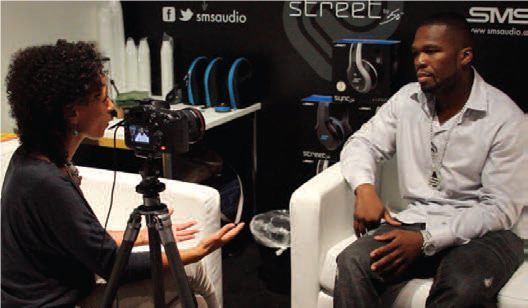 EDGE: Yet, there are tremendous stresses that come with succeeding in your industry—including pressures to stay on top, to make money to remain relevant.
EDGE: Yet, there are tremendous stresses that come with succeeding in your industry—including pressures to stay on top, to make money to remain relevant.
50 CENT: There’s a level of confidence required to be yourself enough to create a separation. You’ve got to understand the history of music and entertainment. You build entertainers to destroy entertainers, for the sake of entertainment. The way around the destruction process is having something to fall back on. That allows me to do what I actually feel like is the hottest material right now. Otherwise, I would pull my hair out trying to second-guess what someone else is going to think or feel.
EDGE: You branched out into boxing promotion this summer with TMT (The Money Team). Where would you like to take professional boxing, which now gets stiff competition from mixed martial arts?
50 CENT: Doing the research, 56 percent of UFC’s (Ultimate Fighting Challenge) demo is 18 to 34. With boxing it’s 30 and up. I think professional boxing lacks what the UFC has. So, to bring youth culture, maybe you need to bring the theatrics you see at a WWE event into professional boxing. You have to pay attention to the successful models that people have utilized elsewhere in order to make minor changes to the natural sport of boxing.
EDGE: Can Atlantic City reclaim its status as a Mecca for professional boxing?
50 CENT: Absolutely! Between Atlantic City and New York City, I’d be looking forward to put on shows in those areas.
EDGE: If you had a choice between your next record going platinum or developing one of your fighters into a heavyweight champ, which would you choose?
50 CENT: My record. I have a stronger passion for music than anything. I love having the ability to be a part of the other businesses, but I remember they came by way of music. If I didn’t have the finances or the popularity from my music, I wouldn’t be able to be a part of those projects.
All photos courtesy of SMS Audio.
Editor’s Note: If Tetiana Anderson’s name sounds familiar, you may have read her interview with Roberta Flack earlier this year in EDGE—or seen her face and heard her voice on television. She’s chased storms for the Weather Channel, covered Operation Iraqi Freedom for MSNBC from Baghdad and is currently a freelance reporter/producer for organizations including NY-1 and CNN. A journalism fellowship recently took her to Berlin, where she crossed paths with 50 Cent at an SMS Audio media event.
10 Ways to Live Longer (and Better)
You may be one of the 47% who “doesn’t pay taxes,” but that other inevitability—death—is a little harder to sidestep. Indeed, sooner or later the predator time catches us all. The trick, of course, is to push “later” as far forward as possible. We do this by eating well, exercising and not smoking. At least, that is what we are told to do. The reality is quite different. According to the CDC, one third of our population qualifies as obese, and a Duke University study projects a rise to 42% by 2030—adding $550 billion to national healthcare obligations. With obesity running rampant through America, some of us actually breathe a sigh of relief that we are merely “overweight.” Meanwhile, we spend billions on exercise equipment that gathers more dust than sweat, gym memberships that can’t be cancelled, and workout wardrobes that still have their tags on—more than $70 billion a year, according to the Sporting Goods Manufacturers Association. And although we have come a long way from idolizing the Marlboro Man and athletes sponsored by Virginia Slims, smoking is actually on the rise among women and teens. We all know what to do. So why aren’t we doing it? What is it that triggers yo-yo dieting, couch potato-ing, and closet smoking? We all want to live longer…so why are we so bad at it? In many cases, it turns out, the prospect of making major life changes is so daunting or dispiriting that folks unconsciously have given up before they even begin; one bump in the road and they revert back to bad habits. A successful outcome is far more likely if you take on small, achievable challenges and fold them into your current lifestyle. In that spirit, we’ve identified 10 smart ways to keep you going strong:
1 DRINK UP The Mayo Clinic has adjusted the longstanding “8 by 8” rule (eight 8-ounce glasses of water daily) to include any healthy fluids. And a Loma Linda University study indicates that as little as 5-8 ounces daily can be helpful.
2 SWEET SURRENDER According to a 15-year study conducted by Dutch researchers, eating about 4 grams of cocoa a day could cut your risk of heart disease. Dark chocolate with a high cocoa content is ideal.
3 LAUGHTER IS THE BEST MEDICINE According to a study by Dr. Michael Miller at the University of Maryland, laughter can reduce blood pressure, lower cholesterol and improve blood flow to the heart by as much as 50%. Start DVR-ing The Colbert Report!
4 ACID TEST The International Journal of Cardiology tells us that chronic heartburn can lead to a heart attack. A high acid level in the esophagus, when untreated, can decrease blood flow to the heart by 20%. According to a CNN report last year, if you suffer from heartburn you might try sleeping on your side to reduce acid reflux.
5 CATCH SOME Zs According to the CDC, 41 million Americans don’t get enough sleep, with consequences ranging from a higher risk of diabetes to depression to slower reaction time in emergencies. How much sleep is right for you? The next time you have a totally free weekend—or better yet, a vacation—go to bed when you’re tired and wake up when you want. If you get through the day without feeling tired, that’s probably your “sleep number.”
6 CURRY FLAVOR Rutgers University scientists have determined that combining curry with cruciferous vegetables (cabbage, bok choi, turnips, broccoli, cauliflower) appears to help ward off prostate cancer.
7 GO NUTS Loma Linda University researchers tracking the lifestyle habits of 34,000 Seventh-Day Adventists (a population famous for its longevity), discovered that those who munched on two ounces of nuts almost daily lived on average almost three years longer.
8 PERK UP Numerous studies have linked coffee drinking (often 2-3 cups per day) with a positive impact on diabetes, heart attacks and strokes—and even Parkinson’s and Alzheimer’s.
9 STAND UP FOR YOURSELF Whether in front of the TV, computer or anywhere, sitting for long periods at work or at home can be almost as risky as smoking or being obese, particularly for your heart. Dr. James Levine, a professor at the Mayo Clinic, suggests that even sitting for an hour straight is sitting too long.
10 THINK POSITIVE A Yale University study of older adults showed that those with a positive outlook on aging lived about seven years longer than those with less optimism.
Dr. Kevin Lukenda, who chairs the Family Medicine Department at Trinitas, also believes in keeping things simple. He advises his patients to live by the following 10 rules:
1 Reduce stress by not taking anything too seriously.
2 Set aside quality time with friends and family; share your feelings, thoughts and fears with them.
3 Do something selfish and productive for 15 minutes every day.
3a Do something selfish and productive for one hour once a week.
4 Read a book, magazine, newspaper—anything.
5 Do nothing to the extreme.
6 Keep your carbs to a minimum.
7 Get enough sleep!
8 Life is hard—be a strong person rather than asking for an easier life.
9 Take walks.
10 See your family doctor as needed. Regardless of which (or whose) nuggets of wisdom you follow, the good news is that you have a lot of interesting and attainable options. Still better news is that some of them you might even enjoy! The best news? All of these not only add up to living longer. They add up to living better.
Editor’s Note: Log onto edgemagonline.com for six more ambitious ways to improve and extend your life.
News, views and insights on maintaining a healthy edge.
Pumped Up Patches Drug delivery via patch works for some medicines but not for others. That could change very soon, thanks to a device pioneered at the Birck Nanotechnology Center at Purdue University. A micro-pump containing small amounts of yeast and sugar has been built into drug patches. The micro-pump is 1.5 centimeters long and uses water activated by body heat to begin a fermentation process that releases tiny amounts of carbon dioxide gas. The gas then powers the pump continually for several hours. The greatest impact of this device would probably be in powering micro-needle arrays used to deliver cancer and autoimmune drugs. These drugs involve molecules too large to be delivered through the skin with traditional patches. The new technology differs from other micro-pumps on the market because it does not use a battery.
 Don’t Just Sit There! Thanks to a new study out of Australia, you can add one more thing to the list of long-term health no-no’s that includes smoking, drinking, lack of exercise and a high-fat diet: Sitting. Research by the Sax Institute of adults 45 and over found that those who sat for 11 or more hours a day had a 40% higher risk of dying within the next three years than people who sat less than four hours a day. The study adjusted for an array of other lifestyle and medical issues, but even for those who exercised regularly, the risk of death still rose with every additional hour spent in a chair.
Don’t Just Sit There! Thanks to a new study out of Australia, you can add one more thing to the list of long-term health no-no’s that includes smoking, drinking, lack of exercise and a high-fat diet: Sitting. Research by the Sax Institute of adults 45 and over found that those who sat for 11 or more hours a day had a 40% higher risk of dying within the next three years than people who sat less than four hours a day. The study adjusted for an array of other lifestyle and medical issues, but even for those who exercised regularly, the risk of death still rose with every additional hour spent in a chair.
 New Road Map for Families of Teen Diabetics For many parents, coping day-to-day with their teenagers is the most difficult, aggravating and exhausting phase of the child-rearing process. For parents of teens with Type 1 Diabetes, managing the disease and the young man or woman can prove next to impossible. The Eunice Kennedy Shriver National Institute of Child Health and Human Development recently provided a road map that families should find helpful. Their findings suggest that kids between ages 12 and 15 with Type 1 Diabetes benefitted dramatically from a two-year program (of three to four meetings a year) with parents and a health advisor to discuss shared responsibilities, goals and strategies for solving diabetes management problems that arose. Meeting with a health advisor during regular diabetes clinic visits, researchers reported, helped families better manage the changes that occur as children take on more responsibility for their day-to-day diabetes care.
New Road Map for Families of Teen Diabetics For many parents, coping day-to-day with their teenagers is the most difficult, aggravating and exhausting phase of the child-rearing process. For parents of teens with Type 1 Diabetes, managing the disease and the young man or woman can prove next to impossible. The Eunice Kennedy Shriver National Institute of Child Health and Human Development recently provided a road map that families should find helpful. Their findings suggest that kids between ages 12 and 15 with Type 1 Diabetes benefitted dramatically from a two-year program (of three to four meetings a year) with parents and a health advisor to discuss shared responsibilities, goals and strategies for solving diabetes management problems that arose. Meeting with a health advisor during regular diabetes clinic visits, researchers reported, helped families better manage the changes that occur as children take on more responsibility for their day-to-day diabetes care.
 Impact of the NYC Soda Ban The announcement of an impending ban in New York City on large, sugary drinks has prompted many people—both inside and outside of the medical profession—to chime in on what, if any, effects this will have on overall health. Obviously, gulping down quarts of soda, energy drinks and sweetened teas a week is not a smart idea. But will shaving a few ounces off this total make a difference? The consensus thus far is that it will—but only a small difference. Obesity is a complex disease, involving a lot of variables. That being said, if the “soda ban” pushes forward the national discussion about the dangers of consuming too much sugar—and overeating in general—it could have a significant impact. Lifestyle changes are often triggered by cultural changes; if the culture of junk-food consumption is altered through publicity and awareness that begins in New York, we may look back on this law as a true game-changer.
Impact of the NYC Soda Ban The announcement of an impending ban in New York City on large, sugary drinks has prompted many people—both inside and outside of the medical profession—to chime in on what, if any, effects this will have on overall health. Obviously, gulping down quarts of soda, energy drinks and sweetened teas a week is not a smart idea. But will shaving a few ounces off this total make a difference? The consensus thus far is that it will—but only a small difference. Obesity is a complex disease, involving a lot of variables. That being said, if the “soda ban” pushes forward the national discussion about the dangers of consuming too much sugar—and overeating in general—it could have a significant impact. Lifestyle changes are often triggered by cultural changes; if the culture of junk-food consumption is altered through publicity and awareness that begins in New York, we may look back on this law as a true game-changer.
 Genetic Connection to Blindness More than 15 million people around the world suffer from blindness brought on by Primary Angle Closure Glaucoma (PACG). The problem is especially pronounced among Asian populations, which account for about 12 million of these cases. A collaborative international research effort launched in Singapore recently identified three previously unknown genes associated with PACG. The medical community has long suspected the disease to be strongly hereditary, but these findings—published in the journal Nature Genetics—confirm the fact. This opens the door to possibilities of novel treatments, as well as the potential of early identification of people at risk for PACG. “These data are the first critical steps toward a better understanding of the underlying molecular events responsible for this blinding disease,” explains Dr. Janey Wiggs, Professor of Ophthalmology at Harvard Medical School.
Genetic Connection to Blindness More than 15 million people around the world suffer from blindness brought on by Primary Angle Closure Glaucoma (PACG). The problem is especially pronounced among Asian populations, which account for about 12 million of these cases. A collaborative international research effort launched in Singapore recently identified three previously unknown genes associated with PACG. The medical community has long suspected the disease to be strongly hereditary, but these findings—published in the journal Nature Genetics—confirm the fact. This opens the door to possibilities of novel treatments, as well as the potential of early identification of people at risk for PACG. “These data are the first critical steps toward a better understanding of the underlying molecular events responsible for this blinding disease,” explains Dr. Janey Wiggs, Professor of Ophthalmology at Harvard Medical School.
 New Study on Job Stress When Johnny Paycheck recorded the country hit “Take This Job and Shove It” back in the 1970s, it turns out he was way ahead of his time. Doctors in England recently completed a study that shows workers who feel over-pressured yet powerless run a risk of coronary disease that is 23% greater than those who are content in their work environment. The study covered around 200,000 workers in a wide range of occupations, from civil servants to factory workers. Subjects were asked about the type of work they did, the workload, deadlines and freedom to make decisions.
New Study on Job Stress When Johnny Paycheck recorded the country hit “Take This Job and Shove It” back in the 1970s, it turns out he was way ahead of his time. Doctors in England recently completed a study that shows workers who feel over-pressured yet powerless run a risk of coronary disease that is 23% greater than those who are content in their work environment. The study covered around 200,000 workers in a wide range of occupations, from civil servants to factory workers. Subjects were asked about the type of work they did, the workload, deadlines and freedom to make decisions.
Who’s hiring our college grads?

Photo credit: iStockphoto/Thinkstock
Putting a child through college is a stressful, frustrating, financially draining experience. Parents able and willing to do so deserve a medal. What do they receive? According to a poll by the research firm Twenty-something, Inc., 85 percent get their kids back. Of all the economic numbers confronting moms and dads these days, that one may just be the most deflating. In many cases, the newly minted grad comes home to roost until his or her employment picture gains some clarity.
Though the economic climate may have improved since the worst of times in 2008 and 2009—which marked a loss of more than eight million jobs nationwide—college graduates and displaced job seekers continue to face a less-than-welcoming marketplace in the Garden State. A recent survey by the National Association of Colleges and Employers (NACE) indicated that just about 25 percent of 2012 diploma recipients had jobs waiting for them upon graduation. “While this number represents a slight increase from recent years, it’s still far from healthy,” says Greg Mass, Executive Director of Career Development Services at the New Jersey Institute of Technology (NJIT) in Newark. An even more disconcerting reality for recent grads: this past summer, New Jersey’s unemployment rate climbed to nearly 10 percent, the highest it has been since 1977.
Fortunately, it’s not all bad news. Representatives of the state’s colleges and universities say it isn’t necessarily that jobs are unavailable in New Jersey, it’s that job seekers simply need to know where—and how—to find them. They point to emerging trends that shed some light on which industries may be bouncing back better than others. Not surprisingly, students who are proficient in the latest technologies will find the biggest pool of potential jobs across the state—and they know it. This year, Computer Science, Information Technology, Engineering, and Information Systems were among the most sought after disciplines, Mass says.
SOCIAL MEDIA BOOM Any parent concerned that their college-aged child spends too much time on Facebook might breathe a little easier knowing that this shift in the way people communicate has actually led to a slew of career opportunities in social media. According to Ryan Stalgaitis, Career Counselor and Internship Coordinator at Fairleigh Dickinson University in Madison, companies are actively recruiting employees who have the know-how to manage their presence on platforms like YouTube and Twitter. “The number-one industry for jobs in New Jersey is anything that deals with social media,” he says, noting that the university is responding to the demand with courses that allow Communications students to pursue a concentration in social media. Likewise, the university’s marketing programs are also experiencing an uptick in enrollment, he adds. “No matter what industry they’re in, all businesses have a need for an online presence today,” says Reesa Greenwald, Interim Director of the Career Center at Seton Hall University in South Orange. “And they need new employees who will be able to help create a stronger Facebook presence, or to properly manage a LinkedIn account,” It’s also an area where recent grads have a leg up on displaced job seekers who have been out of college for a decade or more, she notes.
Even so, students still need to possess traditional communication skills. “We’re still hearing from employers that students need to have stronger writing and interpersonal skills,” says Dr. Joyce Strawser, Dean of the Stillman School of Business at Seton Hall University. The state’s institutions of higher education are trying to stay ahead of the curve in their quest to prepare students for the new demands of the workforce. “Colleges have been responding to developments in technology and business by creating majors that hardly existed five or 10 years ago,” Mass explains. Indeed, many colleges are ramping up their new media offerings to prepare students for careers in cutting-edge industries like game design, animation and programming, graphic design, and e-text and web publication.
9/11 KIDS New Jersey’s college students literally grew up in the “shadow” of 9/11. It changed their world view as kids, and now it’s starting to change their post-graduate careers in interesting ways. Many are finding employment daylight in security-based careers such as information assurance, cybersecurity and homeland security. Others feel compelled to give back to local communities by seeking employment in the non-profit sector. “When we look at the entire spectrum of employment over the past four graduating classes, we see that nonprofit consistently emerges as the top industry of choice for our graduates,” says Beverly Hamilton-Chandler, Director of Career Services for Princeton University. There are some careers that have continued to remain in demand in New Jersey for decades.
Accounting remains on top of the list of fields actively recruiting new employees; positions in the healthcare industry have remained steady even throughout the worst of the recession. According to Kim Crabbe, Director of the Center for Career Development at Drew University, hospitals, pharmaceutical companies, and biotech firms remain among the top sources for jobs in the state. Yet even in a field like healthcare, where jobs are relatively plentiful, many potential employees are finding that flexibility is key when it comes to channeling their skills and education into a career. “They may have earned a major in a particular field, but students need to know there are lots of things they can do with their skill set,” points out Carolyn Jones, Executive Director of the Center for Career Services and Cooperative Education at Montclair State University. “One of our goals is to help students understand that not everyone in the pharmaceutical industry wears a lab coat.” “Job seekers have to be open to pursuing opportunities that may not be their dream career, but that will at least get their foot in the door,” Stalgaitis adds.

Photo credit: iStockphoto/Thinkstock
DOG EAT DOG EAT DOG In many cases, it’s not the career path students choose to pursue, but the steps they’re taking to land coveted full-time positions. Today’s graduates are finding that some tried-and-true methods of job searching—like mailing out résumés and waiting for a response—may no longer pan out. Networking both in-person and online remains the most successful method. “Students have to be assertive,” Strawser advises. “They have to be hungry for that job. They have to learn to follow up, and know how to take networking to the next level.” Not only are New Jersey grads competing with one another for full-time work, they’re also finding themselves up against older workers (who are more credentialed and experienced) due to layoffs, as well as graduates from the last several years, who are still seeking gainful employment.
Some students are even opting to leave the Garden State in search of that first full-time gig. “Graduates are willing to travel further for the right position,” Mass confirms. The competitive nature of the marketplace has also forced many job seekers to chart a less-direct path to their chosen careers. Suddenly, they need an increased level of experience just to compete for what were once entry- level positions. “The career ladder has changed,” Crabbe confirms, adding that sometimes the first step is an internship, not the entry-level job. Those who do snag a good job right out of school face a different work environment than their parents. Twentysomethings find themselves thrown right into the fire as soon as they’ve settled into their cubicles. “I think the greatest challenge is the shortened learning curve for new hires,” says Lynn Insley, Director of the Office of Career Development at Stevens Institute in Hoboken. “Companies expect students to provide value as soon as they join the company, and that’s not something we were seeing prior to the recession.” Job seekers are also navigating an increasing number of positions without benefits—or “consulting opportunities” with no guarantee of conversion to full-time jobs.
Janet Jones, Interim Director of Career Services at Rutgers University, notes that some young people are even opting to bypass the traditional job search by going right into business for themselves. “The students who are most successful are those who have an entrepreneurial spirit, and are able to navigate the opportunities that are open to them,” Crabbe observes. She is speaking for Drew grads, of course. However, this view was shared by all of the college placement professionals interviewed for this story. And for the record, those professionals all represent institutions of higher learning in the Garden State. Their observations and advice are just as relevant to students attending schools outside the state. Indeed, let’s not forget that New Jersey’s greatest export is college students—and that the vast majority will be coming back. We’ll give them a reassuring hug, stuff a few dollars in their pocket, provide meals and laundry service, and offer them a place to rest their heads. And do so gladly. We just don’t want that situation to become a permanent one.
In the opening moments of Goodfellas, a murderous threesome played by Robert DeNiro, Joe Pesci and Ray Liotta struggles to dispose of made-man Billy Batts. It’s the beginning of the end for these characters, but for actor Frank Vincent, the part of Billy helped catapult him to iconic status. As “Shovel Ready” roles go, one might say this was the capo di tutti capi. EDGE Editor-at-Large Tracey Smith has made a study of the mob movie over the last year or so. Through her interviews, she has uncovered a rich tradition of storytelling, a dynamic passion for filmmaking, and a core of actors who care deeply about their craft. Frank fits this mold as well as anyone in the business. An accomplished performer long before he made his screen debut, he is always looking beyond the camera and over the horizon.
EDGE: You’ve delivered several indelible performances as a New York mobster, including Billy Batts in Goodfellas and Phil Leotardo in The Sopranos. But for the record, you’re a Jersey Guy.
FV: I couldn’t think of myself as anything else, even though I wasn’t born here. Of course, I know New York well. I’ve done a lot of New York movies and know all the boroughs. But I’m a Jersey guy. I’m proud to be from Jersey. I think it suits me.
EDGE: When did you move to the state? My father’s family came to America and settled in North Adams, Massachusetts. I was born in Massachusetts and so was one brother. My second brother was born in New Jersey. My father’s friend had a girlfriend in New Jersey, and he (my father) went out with them one time and met my mother, who was from Jersey City. They wound up getting married and eventually we moved back there.
EDGE: Who were your role models growing up?
FV: Like most men, my biggest influence was my father He was a very charismatic man—uneducated but very smart and hardworking. A great work ethic. He was the guiding light in my life. I loved my mother, but she was more of the disciplinarian in the family; my father was my idol. When I was a little boy I would watch him getting dressed in front of the mirror. He was a flashy guy, he loved to groom, his hair was always impeccable He wore Old Spice cologne and had a pencil-thin mustache. He saw himself as kind of an Errol Flynn type. My mother dressed nicely, too—when they dressed up, they dressed up. My brothers are the same way.
EDGE: Before acting there was a career for you in music. Was that your father’s influence?
FV: I think that actually started with my mother. I would come home from school for lunch and she always had music playing in the house. We would sit together and eat and listen to the radio. That implanted a love of music in my head. My father thought of himself as a singer, but he didn’t really have the ability—I think he was tone deaf. Yet he had the moxie to do it in front of people. Anyway, when I told my parents I liked music they made me take piano lessons, which I did not like because it took me away from the kids in the street. The Jersey City Department of Recreation had a drum and bugle corps, and I joined. I wound up being a bugler because I had taken some trumpet lessons. Many of my friends went on to become cops, fireman or went to jail, because it was a pretty rough neighborhood. But I stayed with the guys that played music. I finally ended up joining the St. Joseph’s Cadets from Newark. I traveled the country with them, and we were national champions. Competing in front of 70,000 people at Yankee Stadium as a 14-year-old gave me the confidence to go further. I was never afraid of an audience.
EDGE: How did you end up with your own band, playing the drums?
FV: I bought a set of drums for $100, auditioned for a band and got the job. Now all of a sudden I’m in show business! We were Bobby Blue and the Aristocats. We played in a lot of top clubs here and in the city. We were good. We were well-dressed. We were the real deal. One of the guys worked as an arranger for Frank Sinatra. Eventually I took over the band, and over the course of time we became a trio, Frank Vincent and the Aristocats. Between dates, I was in and out of New York sometimes four or five times a week working in recording sessions— backing up artists, working on albums, playing jingles. A record producer named Bill Ramal got me into that part of the business. He worked with Del Shannon, Dion and the Belmonts, Steve and Edie, and Paul Anka.
EDGE: What happened with the trio?
FV: Well, my piano player left me in 1969. That summer I hired a young guitar player who used to come to our club dates and occasionally sit in with us and sing. Our first gig was July 4th at the VIP Lounge in Seaside Heights. We ended up being the toast of the Jersey Shore that summer. We went from being piano, bass and drums to guitar, bass and drums.
EDGE: And that guitar player was…
FV: Joe Pesci. We had such chemistry. Not just playing. We’d do bits back and forth. I had a sort of Don Rickles thing going. The club entrance was right near the stage, so as people walked in off the street I’d always have something to say. We both got a lot of laughs and before you know it, we’re doing two hours of comedy a night. A couple of years later, this movie producer is in the audience and likes what we’re doing. He asked us both to audition for a low-budget movie called The Death Collector. Later they changed the name to Family Enforcer and put our faces on the cover. Joe played a little mob guy and I played a Jewish businessman. Bob DeNiro and Martin Scorcese saw that film and hired Joe to play Joey La Motta and me to play Salvy in Raging Bull. That was our first studio movie. I got my SAG card and an agent, and Joe got nominated for an Oscar. Thirty years later, 60 or 70 movies, TV shows, commercials—that was how it began.
EDGE: You mentioned Sinatra. Was he one of your main influences?
FV: Yes. The utmost person in my life, besides my father, professionally was Dean Martin. He wasn’t a great singer, but he was a great stylist. From him I learned timing, how to speak to audiences, how to carry myself, how to smoke a cigarette. Dean Martin was hypnotic. Frank would be second. Musically, I don’t think anyone in the world compares to him. I probably know the lyrics to every song he sang—that’s how much I listened to him. I learned to play the drums listening to his records. The style of music my band played was the music he sang.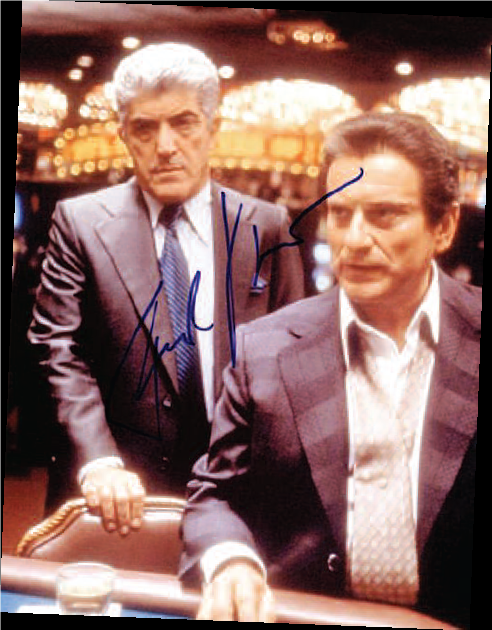
EDGE: Do you think your father had an impact on your professional career?
FV: Sure. I learned to be fearless from him, that you cannot be afraid to fail. That’s what kept me going through my music years when I worked from week to week or month to month. When the acting came around, I wasn’t intimidated by Robert DeNiro or Bruce Willis or anybody that I worked with.
EDGE: What was your first meeting like with DeNiro?
FV: I had to audition for Raging Bull at a hotel on Central Park West. I went up the elevator and got to the door, knocked, and a production assistant let me in. I came face-to-face with DeNiro, and he said, “Hello Frank. I’m Bob and I loved your work in Death Collector.” I said, “Hello Bob, I loved your work in Deer Hunter.”
EDGE: How did you get along with Scorcese?
FV: He’s a first-generation Sicilian like myself, and I think that shared culture really opened a lot of doors for us. That’s probably why I did three movies with him. And, of course, Joe and I had that chemistry, which he utilized really well. Marty really knows what he’s doing when it comes to putting a cast together. His mother and father were wonderful people, in fact, may they rest in peace. It was like being home, this was the way my home was! At my house we always had Sunday dinners, I spoke a little Sicilian and Neopolitan, and we always had espresso and played cards afterwards.
EDGE: About Pesci—he beat you up in Raging Bull and again in Goodfellas. Then you gave him a “well-deserved beating” in Casino. Did that even the score?
FV: You know [laughing] when you’re on a film, you don’t think “revenge” as you’re doing those scenes. It’s what the characters are doing, not you personally. It’s only afterwards, in interviews, that it comes up. But yes, it’s true, Billy Batts got his revenge. Although I think technically Billy got his revenge at the end of Goodfellas, when Joe got killed. And for the record, in those scenes those are stuntmen.
EDGE: All of the characters you’ve done have given you some interesting “street cred” in the Rap and Hip-Hop world.
FV: They have. In 1996, Hype Williams was directing the big-budget rap video for “Street Dreams” by Nas. It referenced the movie Casino and I was in the video. Hype asked me if I would serve as an acting coach for his first movie, Belly, which starred Nas and also DMX, Method Man and T-Boz. The rappers had already interviewed three traditional acting coaches and rejected them. They wanted a real “made guy” [laughing] so I went to meet with them and they agreed to work with me because of the image I portrayed. That’s the truth. And you know what? They had no knowledge of acting, but they were brilliant. They were all poets, so the dialogue came easy to them. It was keeping them on the spot so they stayed on camera that we had to work on. I also was in a couple of scenes. That movie was quite an experience.
EDGE: What roles do you look back on and feel like you really enjoyed doing?
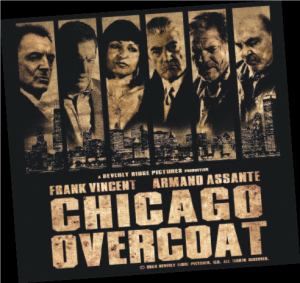 FV: I liked Lou Maranzano in Chicago Overcoat, which we shot in 2007 and was released in 2009. Lou had some interesting issues. Frank Marino in Casino was a good role for me, too, although it wasn’t a great speaking part. People think you have to speak a lot to have a big role but that’s not true. And of course, I enjoyed playing Phil Leotardo in The Sopranos because the writing was so brilliant. The level of discipline on that show was a real eye-opener as an actor. We shot each episode like a movie, on film, but in only 15 days. You could not deviate from the script. To change a single word—an uh or an and—you had to get permission.
FV: I liked Lou Maranzano in Chicago Overcoat, which we shot in 2007 and was released in 2009. Lou had some interesting issues. Frank Marino in Casino was a good role for me, too, although it wasn’t a great speaking part. People think you have to speak a lot to have a big role but that’s not true. And of course, I enjoyed playing Phil Leotardo in The Sopranos because the writing was so brilliant. The level of discipline on that show was a real eye-opener as an actor. We shot each episode like a movie, on film, but in only 15 days. You could not deviate from the script. To change a single word—an uh or an and—you had to get permission.
EDGE: Is Billy Batts the character you relate to most? It seems to be the one your fans gravitate towards.
FV: That’s certainly my most iconic role. You know, I didn’t realize how big Billy Batts would become—he really didn’t have a lot to do in that film. The fact I did that “Get your shine-box” scene with Joe is probably why it worked so well. If you played back all the takes we did at that bar, I mean, the timing of each was perfect every take. Marty said that to us. By the way, he also let Joe ad-lib in the famous “Do I make you laugh?” scene with Ray Liotta. Watch that scene again—you’ll see that Ray didn’t know what was coming.
EDGE: So will we see Billy again?
FV: In a way, you will. I have been working on a memoir with Steven Prigge, which I’m calling I Went Home and Got My Shine Box…Now What? Steven was my coauthor on the first book, A Guy’s Guy to Being A Man’s Man, which, by the way, is being optioned for a Hollywood comedy by J.C. Spink, who produced the Hangover films.
Editor’s Note: You may recall that Frank Vincent was our “cover boy” for the Gray Matter Issue earlier in 2012. You may also have seen him channeling the Rat Pack in a commercial for Ciroc Vodka with co-stars Sean (P. Diddy) Combs, Boardwalk Empire’s Michael Williams and Aaron Paul of Breaking Bad fame. Ever the entrepreneur, Frank is busy promoting Iso-Test, a performance-boosting dietary supplement. He is also prominently featured in Alan Robert’s new Killogy series of graphic novels, which debuted on Halloween. And if you are stumped for that perfect holiday gift, log onto frankvincent.com and check out the MOBblehead Doll, which utters Frank’s favorite movie lines, including Go home and get your shine box! Nobodys breakin’ up my party! and Give those Irish hoodlums a drink!




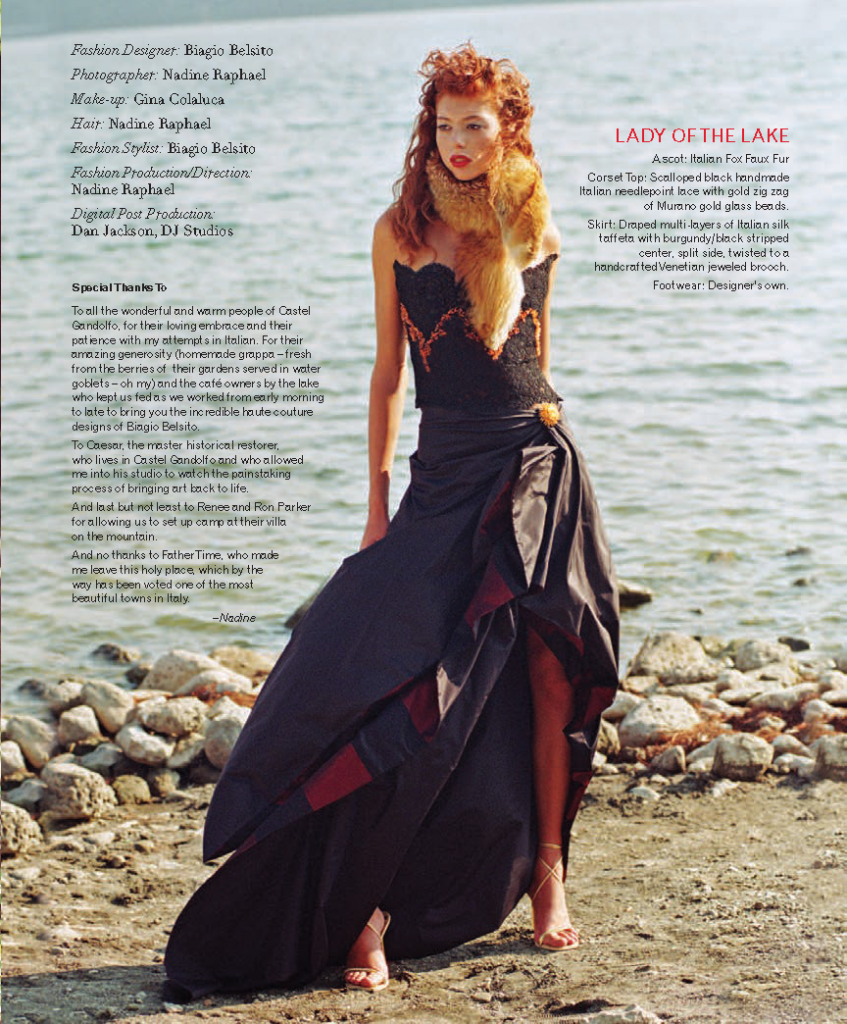
At TRMC’s Health & Fitness Center, sometimes anything seems possible
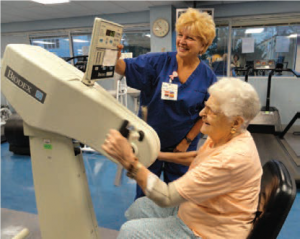
Judy Christianson, RN, cardiac rehab nurse, monitors Antonetta Paul’s workout as she gets exercise designed to strengthen her upper body.
A 40-something woman pulls to keep the pounds off on the rowing machine. Another woman in her early 60s pedals the recumbent bike to strengthen her heart following heart valve repair surgery. Over by the weights, two men— maybe 20 and 50—swap workout stories. Welcome to the world of movers and shakers at Trinitas Regional Medical Center’s Health and Fitness Center in Elizabeth. So naturally, it is 90-year-old Antonetta Paul who inspires everyone with her grit and determination whenever she comes into the Trinitas Rehabilitation and Fitness Center at the medical center’s main campus.
Antonetta is a firm believer in staying active to stay young and healthy. A cardiac patient who underwent a quadruple bypass in 2003, Antonetta is one of the oldest members of the Health and Rehabilitation Center at Trinitas Regional Medical Center. How she got into the workout regime is the story of attentive doctors and good follow-up care. While under the care of cardiologists David Pinnelas, MD, and Edward G. Williams, MD, Antonetta visited the office for a stress test.
Within a moment of stepping onto the treadmill, Dr. Pinnelas advised that she should step off and come into his office. “When I got there, he told me that I had serious cardiac problems,” recalls Antonetta. “He recommended that I undergo a quadruple bypass. Well, I told him the surgery would have to wait a few days since I had plans to visit the Liberty Bell in Philadelphia with my children and grandchildren.” The Elizabeth resident, who can remember noticing only some fatigue, had the surgery performed at Beth Israel Hospital in Newark at the age of 82. Following a short stay in the hospital, Antonetta spent a few weeks in a nursing home setting. But since then she has been living independently in Elizabeth. Since the major surgery, fatigue is a thing of the past and her heart health couldn’t be better for this woman who is one of the most frequent and consistent users of the Health and Rehabilitation Center.
Her three-day-a-week schedule begins at about 7 and includes 20 to 25 minutes on the stationary bicycle; 6 to 10 minutes on the treadmill and 8 minutes (“sometimes I do 12 minutes or more”) on the Nu-Step recumbent bicycle. She finishes with 4 minutes of arm exercise on a bicycle-like apparatus designed to improve upper body strength. It’s especially helpful for women who have less upper body strength than men. At every step of the way, Antonetta’s progress in each workout session is monitored under the guidance and supervision of Exercise Physiologist Hugh Rappaport, and the watchful eyes of the Center’s cardiac 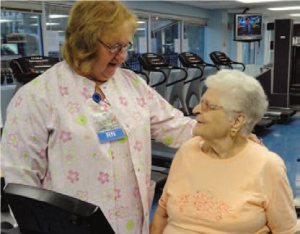 rehabilitation nurses, Judy Christianson and Jean Mikita. They all consider Antonetta a major success story and hosted a 90th birthday celebration for her this summer. “I enjoy the time I spend at the Center,” Antonetta says. “I look forward to it and it helps me get my day started. Jean, Judy and Hugh tease me a bit about how I’m a ‘flirt’ but they just like to bring a smile to my face.”
rehabilitation nurses, Judy Christianson and Jean Mikita. They all consider Antonetta a major success story and hosted a 90th birthday celebration for her this summer. “I enjoy the time I spend at the Center,” Antonetta says. “I look forward to it and it helps me get my day started. Jean, Judy and Hugh tease me a bit about how I’m a ‘flirt’ but they just like to bring a smile to my face.”
Antonetta appreciates the care she received from Dr. Pinnelas at the time of her surgery. She recalls a visit to his office a few years back, when he told her he was leaving the Elizabeth area to establish an office in Neptune at the Jersey Shore. “He asked me if I would be willing to visit his new office once a month so he could keep on eye on me,” she explains. “Well, I looked at him and said, ‘I tell you what, how about if you come up to the office here in Elizabeth to see me once a month?’ He couldn’t stop laughing.” It’s that kind of gumption, independence and belief in herself that makes Antonetta Paul the “poster child” of the Trinitas Health and Rehabilitation Center.
Editor’s Note: In addition to her editorial role with EDGE, Kathryn Salamone is editor of weekly, monthly and on-demand publications for the Trinitas organization. An award-winning communicator, Kathy’s press releases appear in numerous local and regional media.










